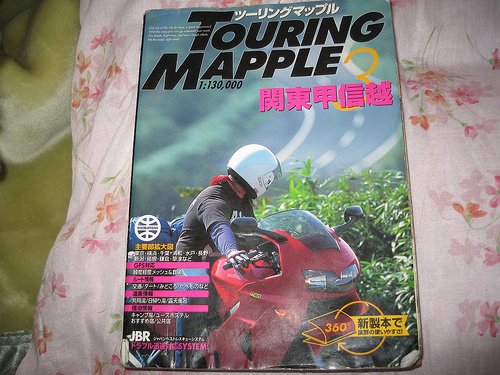Perhaps more than any other people, the Japanese import words from other languages for their daily use, nearly always taking them from English. But after they’ve changed the words to conform to their unique sensibilities, what’s left isn’t always English that you or I could identify. First of all, long English words can be unwieldy in katakana, so they’re often shortened to four syllables that encapsulate the core meaning, which is where words like risutora (corporate restructure, i.e. layoffs), sekuhara (sexual harassment in the workplace) and ganpura (Gundam plastic models) come from. Then there are words that the Japanese create because they don’t know how silly they can sound to naive speakers. Some of these words include “fancy shop” (a store that sells cute character goods like Hello Kitty); “guts pose” (the manly pose an athlete might make); “car navi” (a GPS system for your car); “charm point” (a person’s positive features); and “skinship” (the good skin-on-skin feeling of a father holding his baby in the bath). So when you come to Japan, you need to do more than learn Japanese — you may need to learn some English, too.
Part of the reason I enjoyed learning Japanese in college is that the grammar and structure are so very different from English — there was less potential for confusion than if I’d studied, say, French (or at least it seemed that way to me at the time). The word order of Japanese is subject-object-verb, compared with the subject-verb-object in English, which took some getting used to. Something that seems unique to the Japanese language is the existence of grammatical “particles” or verbal markers for parts of sentences, such as the object, conveniently o (as in sushi o taberu, to eat sushi); no, a marker for showing ownership or association (Keiko no okaasan, Keiko’s mother); and ni, a particle showing direction (anata ni ageru, I will give it to you). Two of the more troublesome grammatical elements for students are wa and ga, which mark the topic and subject of a sentence, respectively, and which many students never seem to quite figure out on a conscious level — in fact, I am one of them, even though I’m fluent in the langauge. Although the two are often interchangeable, wa is the wider subject of the sentence (often omitted), and ga acts like a “second subject” or object — it’s easy to think too much about it. A sentence that uses both would be watashi wa sushi ga suki desu, literally “As for me, I like sushi.” Japanese people seldom know anything about their own grammar so if you want to confuse one, ask them to explain the difference between wa and ga. (Oh and by the way, this is a different wa than the wa (和) meaning harmony.)
One of the rules of Japanese cleanliness is that anything related to feet or shoes is kitanai (dirty, unclean), and shoes are always left at a special recessed area near the front door called the genkan. The custom of putting shoes near the front door can lead to some interesting social interaction that we couldn’t conceive of in the States. For example, a genkan full of shoes is an immediate signal that a party is going on, and if a girlfriend drops by her boyfriend’s apartment and sees a strange set of woman’s shows there, she knows without going inside that he’s fooling around. In Doushin – Same Heart, a dating-sim game that will be released in English soon, there’s a sub-plot where one of the characters sees her sister’s shoes in the genkan despite the fact that the lights in the house are off — she immediately knows that her sister must be up in her room, and that something must be wrong.
















